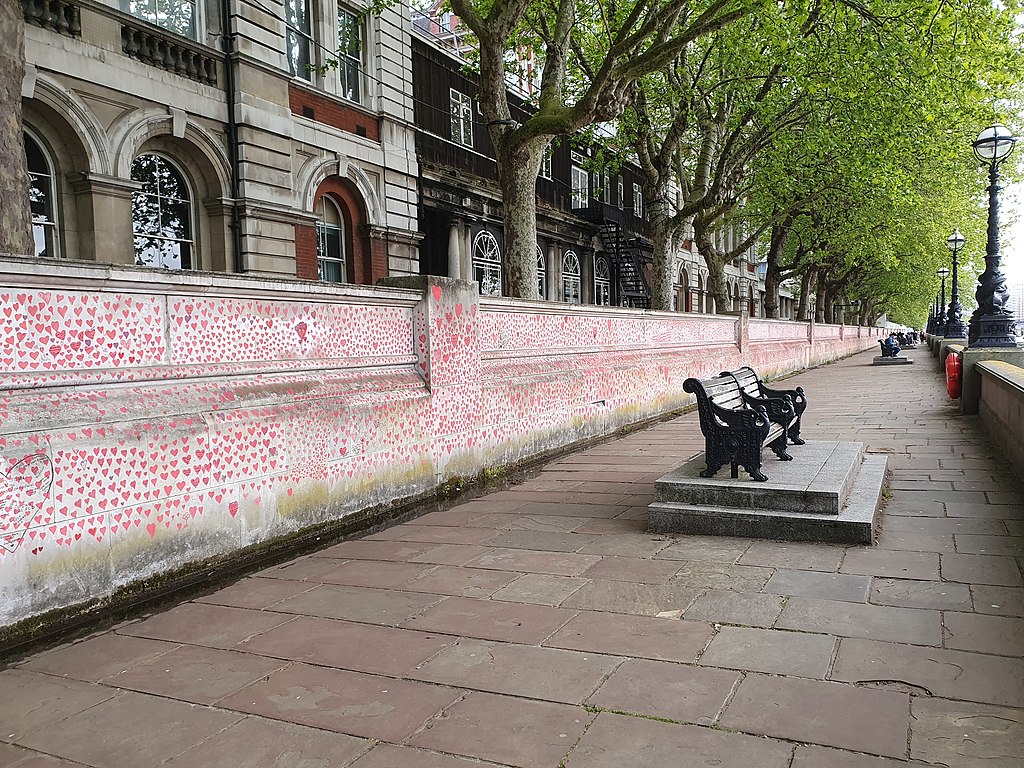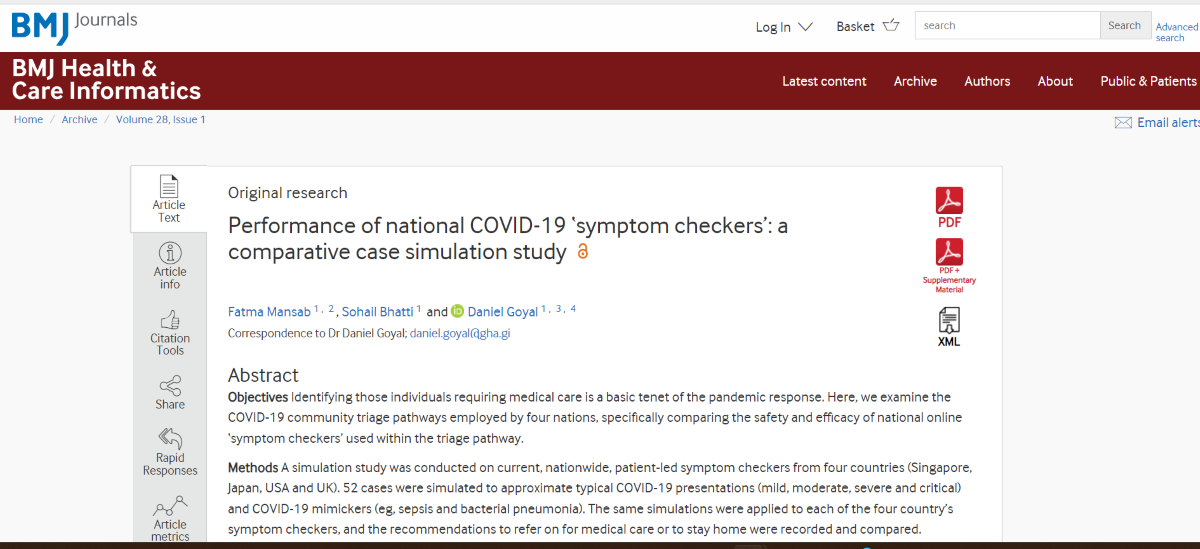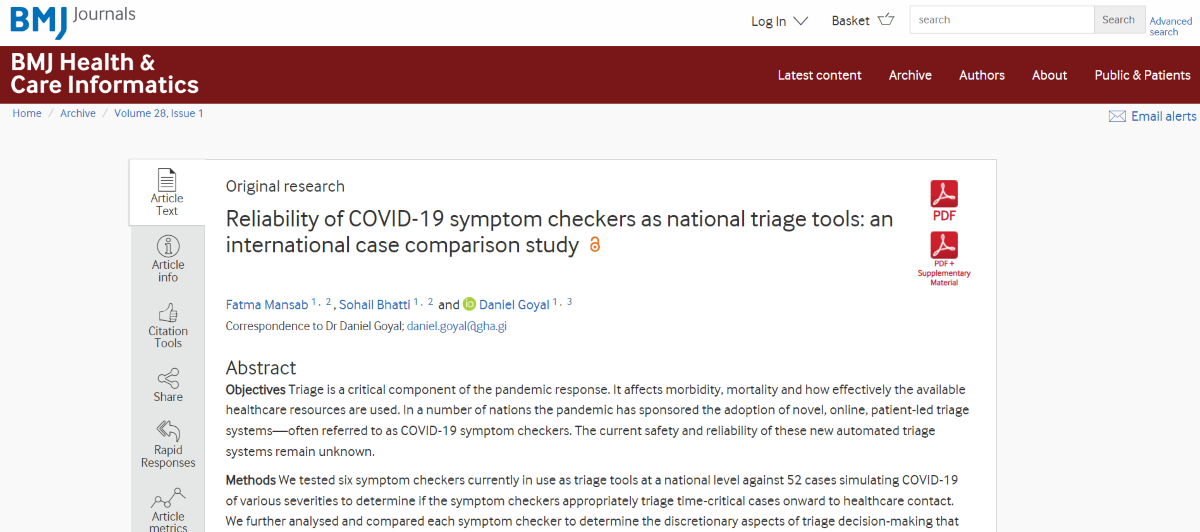
Partygate is triggering, I assume for most of us. For me, it is the abandonment of the public by the government that causes most trauma.
So I wanted to share with you what I found to be one of the most shocking parts of the national covid response.
It was March 2020 and I was charged with reviewing our local hospital’s Covid Triage Pathway.
For those unfamiliar, triage is how we decide what level of healthcare a patient needs – so when to send Covid patients to hospital!
The UK had taken a very odd position. It had been decided (centrally) that all triage was to be done online via an automated, patient-led triage system. This meant the patient would input their details into ‘111’ and an algorithm decided what level of healthcare they needed.
It was odd. No other country emulated this. No other country used an automated online ‘symptom checker’ as the first and ONLY point of triage.
Most countries stuck to the international guidelines, to a greater or lesser degree.
That was for all patients with suspected or confirmed Covid to receive a clinical assessment, and if at risk (including over 65s – over 50s in places like Singapore) to be admitted for observation.
This is basic common sense. We didn’t know Covid very well and therefore needed to keep an eye on patients who got it, get to know the disease, and also it was helpful to isolate patients to stop it spreading.
Of course, depending on how much spread there was, this could involve quite a high number of patients to be assessed and admitted. Most countries achieved this with GP-led Covid community assessment services and basic level care field hospitals.
The UK took a very different approach.
– Patients told NOT to go to their GPs
– Patients were instead to go online ‘111’, where they would use a self-assessment form just designed for the pandemic.
Instinctively it felt odd. No clinical history taking, no examination, no basic observations, not even a chat…and we somehow hoped that would tell us who needed to be seen in hospital?
Given I was reviewing our triage, I had to know what was the UK’s recommendation for receiving patients, so I looked at the ‘111’ triage system.
There was no information on referral thresholds – that is, how sick someone had to be to be referred to the hospital. We didn’t know.
So I had to put some examples through the ‘111’ symptom checker to try and get an idea. This is when I fell off my seat…
Pretty much unless the patient was gasping for breath, I couldn’t get the algorithm to recommend clinical contact.
The advice was almost always STAY HOME!
No call back from a nurse or a doctor.
No advice to attend a local Covid assessment centre.
Just stay home (and get a test).
I ran simulations for hours. I got my colleagues involved and they ran simulations. And we all just couldn’t believe how hard it was to get ‘111’ to refer on to a call back or to the hospital.
This was one simulation: an 80-year-old man with diabetes and heart failure has a cough, fever, and moderate shortness of breath for SEVEN days! The advice was to stay at home! No call back. No assessment.
An 80-year-old with a fever for 7 days…stay home!!!
We discussed it and decided to undertake a formal case simulation study.
We compared the symptom checkers used by the U.S., Japan, and Singapore with the UK’s ‘111’ (England version).
Bear in mind that in the other countries, you could go straight to a doctor (USA less so).
The results were shocking…
Of all 52 cases we simulated (severe Covid, sepsis (which can look like Covid), critical sepsis, etc…), the UK referred onward to ANY form of healthcare contact only 44 per cent of cases.
Those told to STAY HOME with no contact included severe Covid and sepsis.
Singapore and Japan referred onwards 88 per cent and 77 per cent, respectively.
The USA was actually worse, with only 38 per cent being referred onwards…but the Americans did not use their symptom checker as the SOLE point of triage. Patients could just go to their doctors (although discouraged to do so).
To be honest, this terrified me on two levels.
Firstly, people wouldn’t get the care they needed when they needed it.
Secondly, if we didn’t catch the moderate diseases and get the oxygen and such like, then people would present much sicker and overwhelm our high dependency (HDU) and intensive care units (ICU).
We wrote up our publication. Meanwhile I contacted NHS Digital (those running ‘111’) to express our grave concerns. They requested a copy of our results on April 28, 2020. They then requested a meeting…
We discussed our findings and the clinical ‘111’ team engaged with them.
We published as a pre-print and then submitted to the BMJ’s (British Medical Journal) Health and Care Informatics who published on March 8, 2021.

Our conclusion:
“…while symptom checkers may be of use…, if used as the sole point of initial healthcare contact, are likely to confer a tangible risk of delaying the presentation of time-critical acute illnesses.”
Despite all the problems going on at the time, it drew some news attention, including the BBC…
NHS Digital response was very disappointing:
“Over the past year it has been continually revised and updated in response to new scientific information, government guidance and public health strategies.”
It had changed, but I knew (I had been watching) not by much.
So, we repeated the study…
It was published on October 18, 2021:
Our conclusion:
“The US and UK symptom checkers could not reliably triage treatable, time-critical cases in to healthcare contact or follow-up and were unable to consistently differentiate mild from severe COVID-19.”
Basically, it didn’t work.
And the BIG issue was that it was a national symptom checker…this meant all people were triaged the same throughout the country…basically as if hospitals were at capacity and we were rationing care.
The reality was many places had very little had very little Covid at the start and there was no need to ration care. This led to many hospitals being relatively “quiet”.
The government had ordered a suspension to routine activities and were telling people to stay away from hospital. A&E attendance fell and there was plenty of capacity.
Similar story for GPs… workload fell.
It was an utter waste of resources.
The government’s desire to control the response nationally (and I wonder, the testing pathways) led to pre-emptive rationing of healthcare, which was entirely unnecessary for the majority of the pandemic.
To my mind, the use of ‘111’ triage in place of GP-led triage was one of the biggest and most costly – in terms of life and resource – that was made.
The important points:
- We, the health and care workers, had no control over when we could see patients or how full hospitals were.
- GPs weren’t allowed to see Covid patients as first point of contact.
- Older people suffered more.
- There was no need to ration care all the time and everywhere.
The correct approach, the approach we always use in triage, is to respond to local demands and resources.
The government were not interested in local opinions and thought they knew best, or at least wanted to control the pathways.
They did.
And they proper messed it up.






